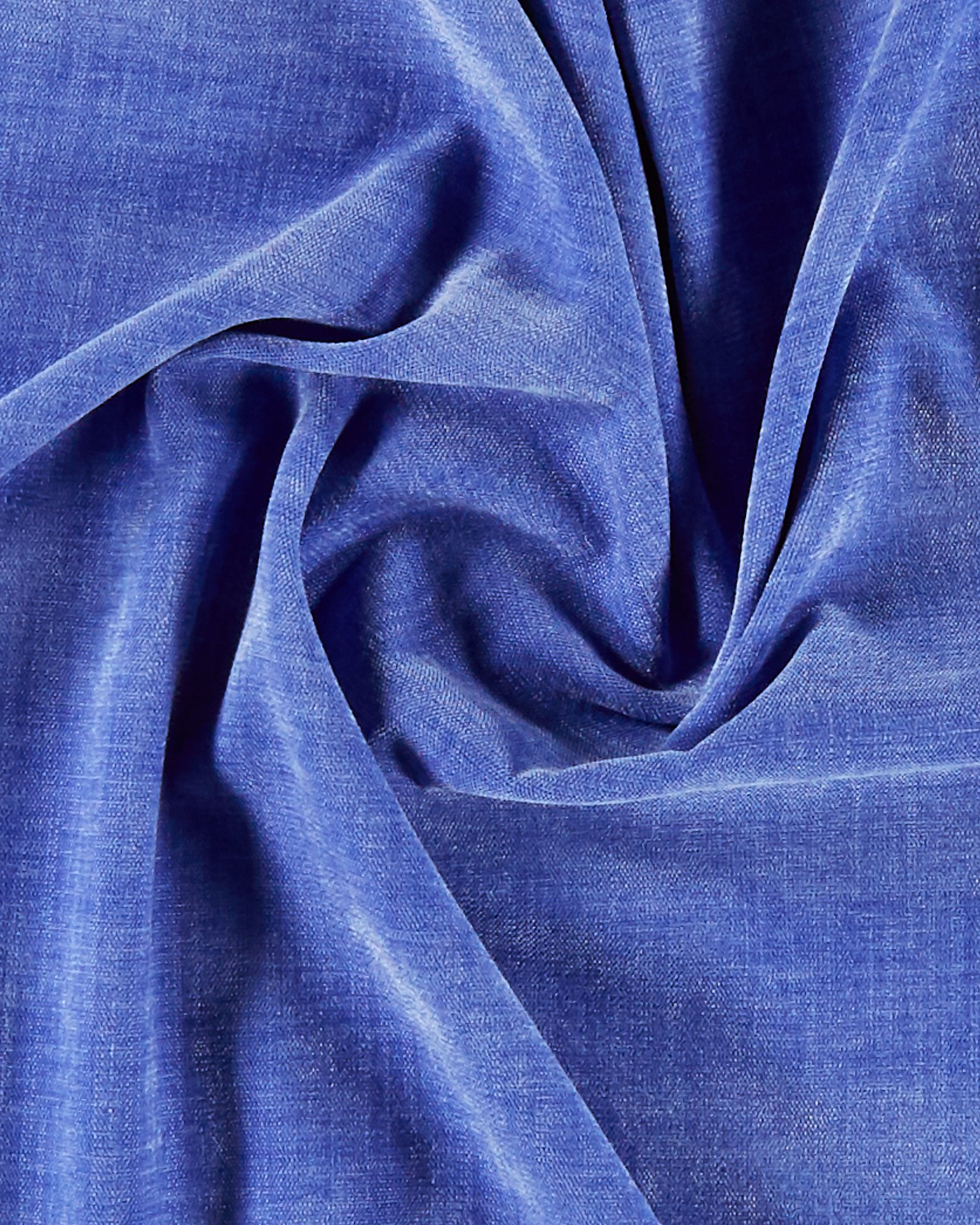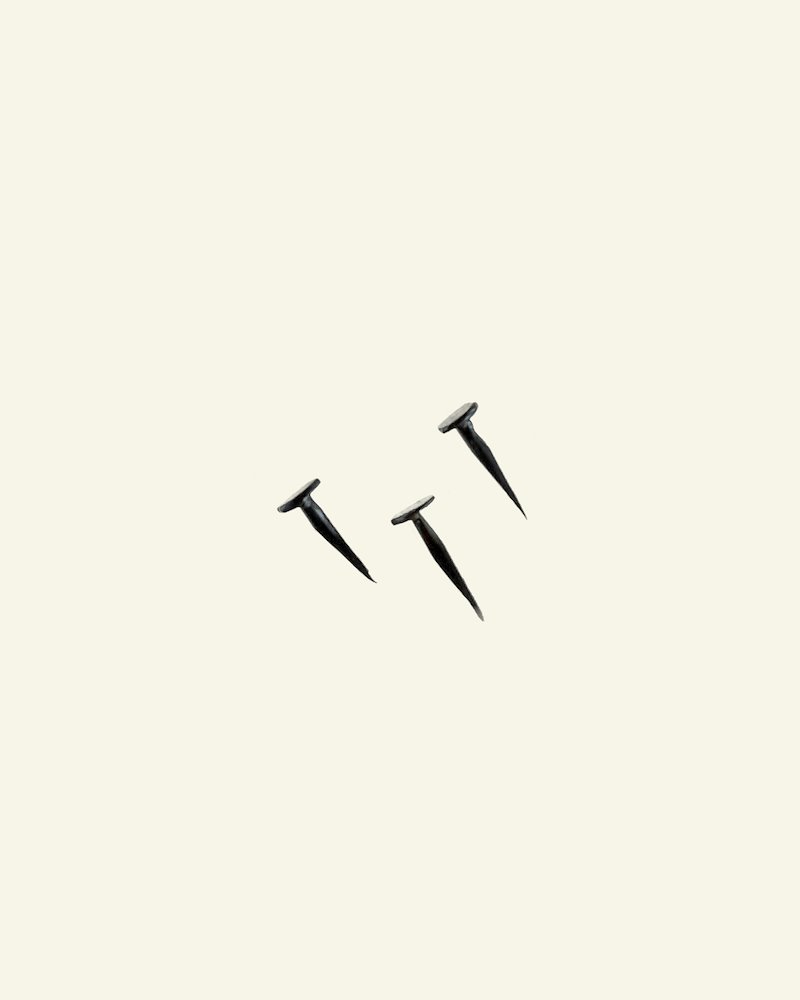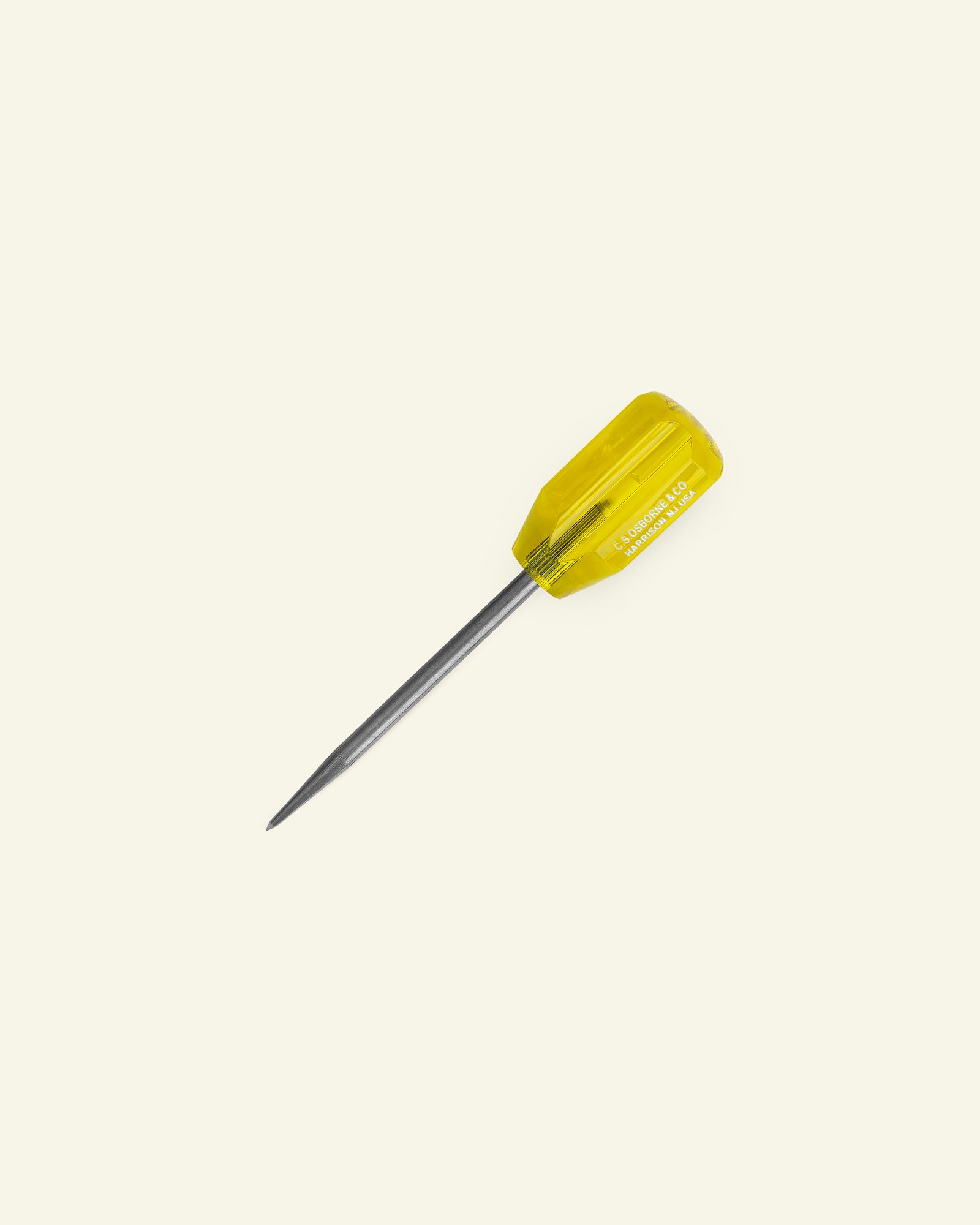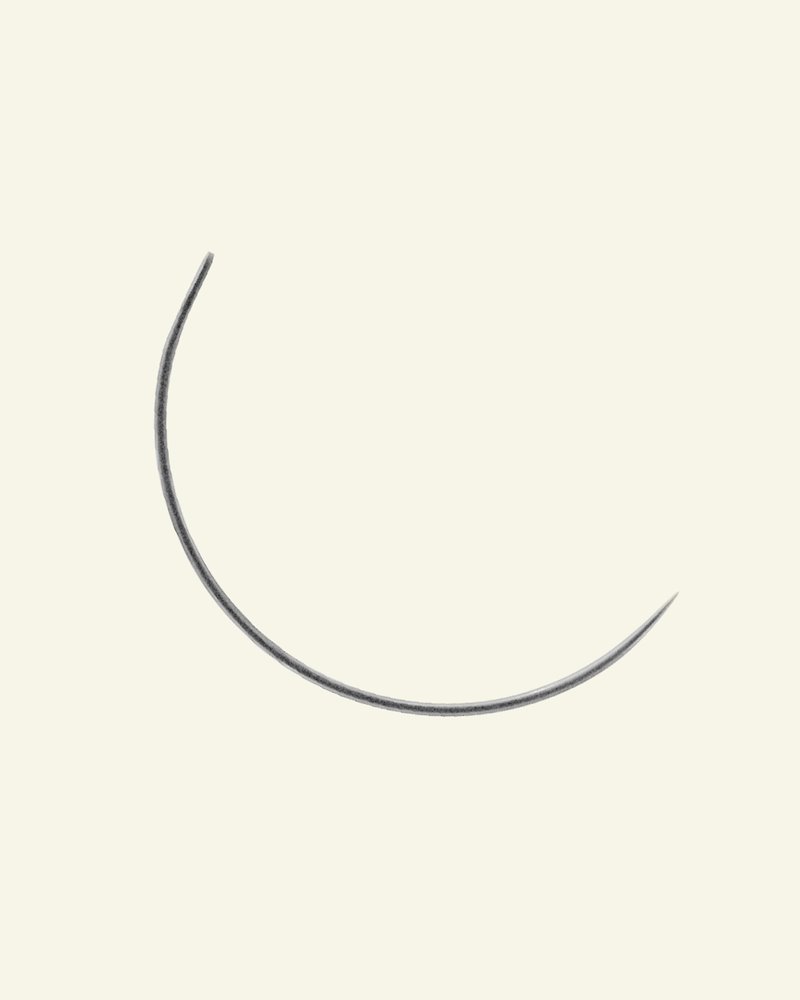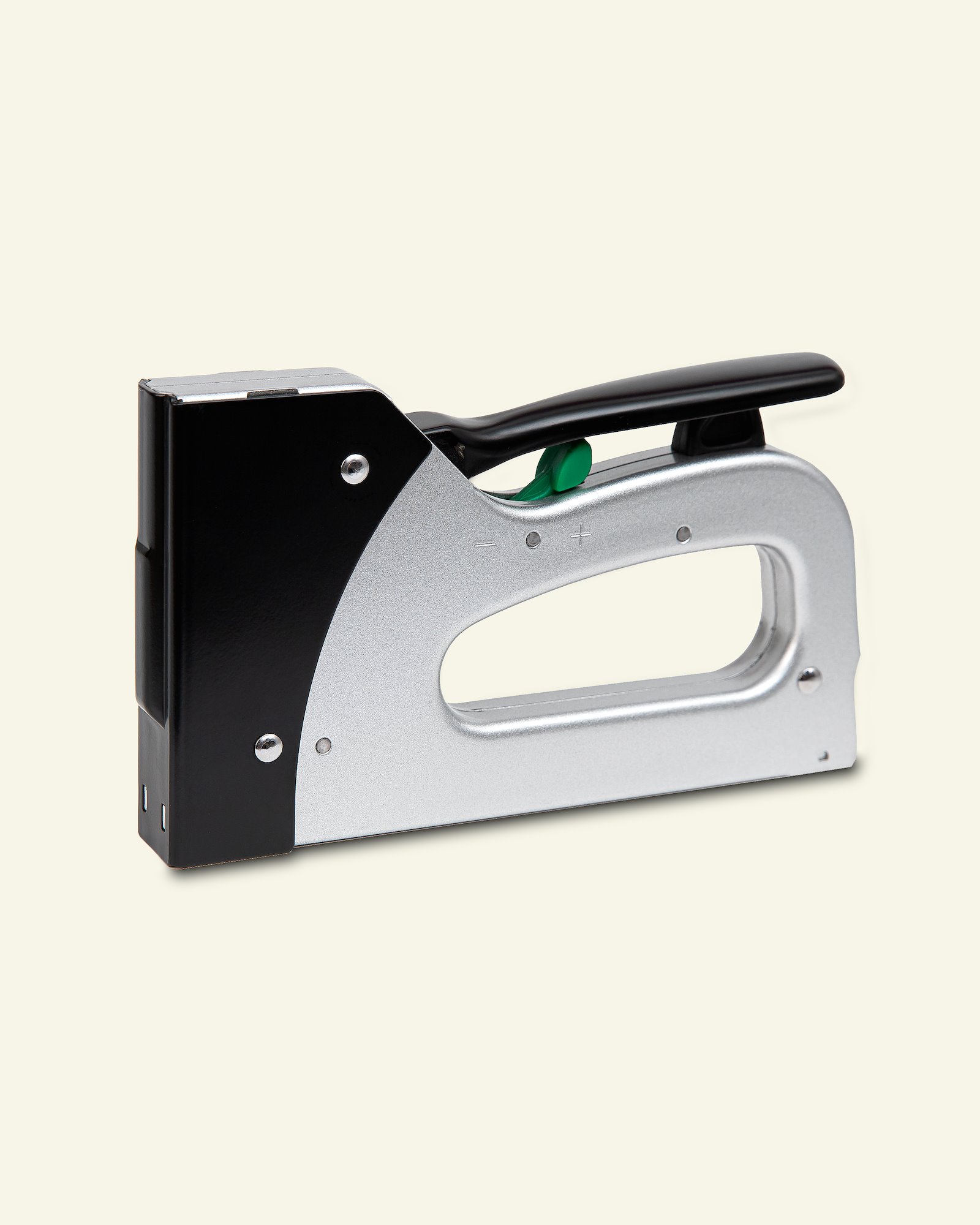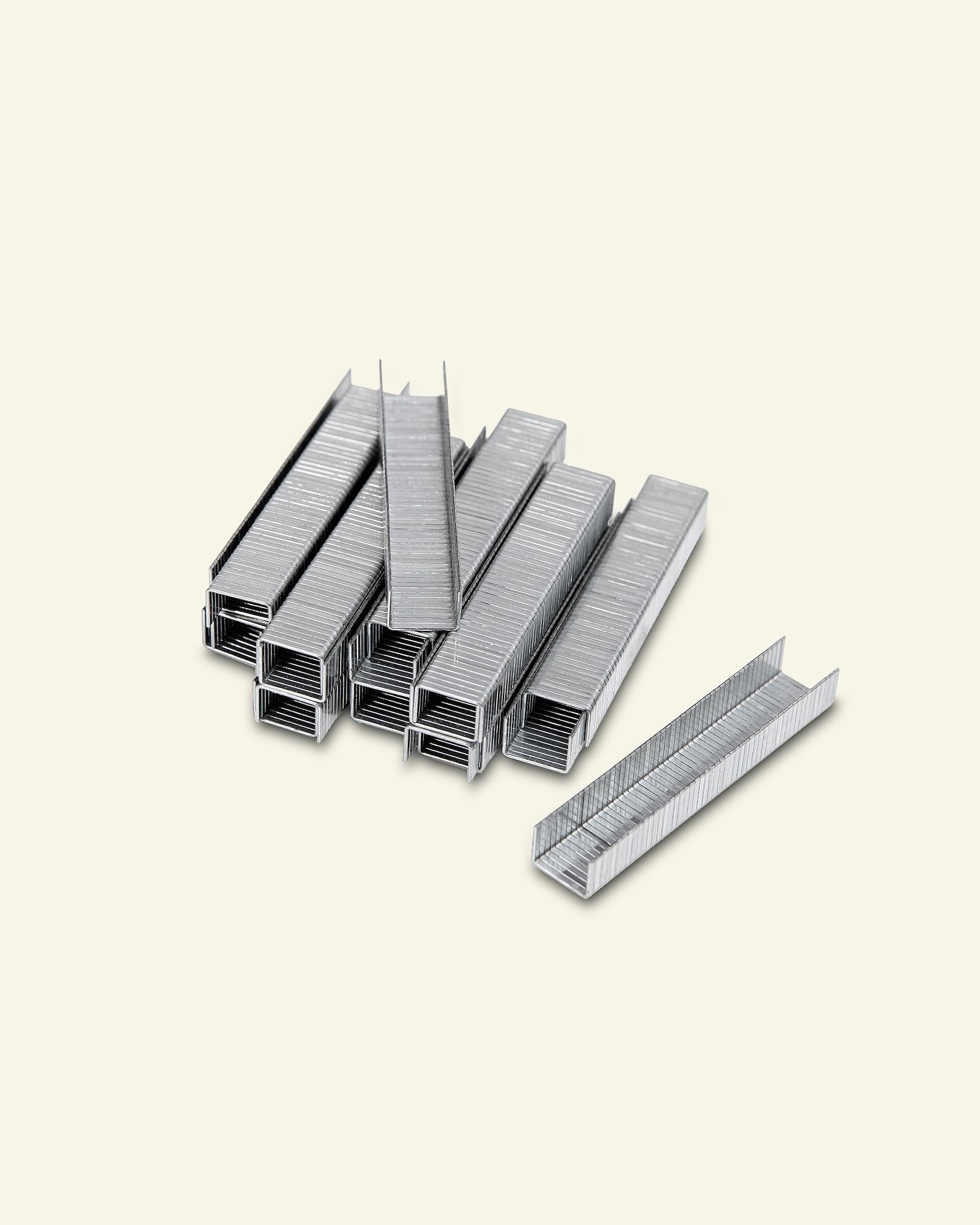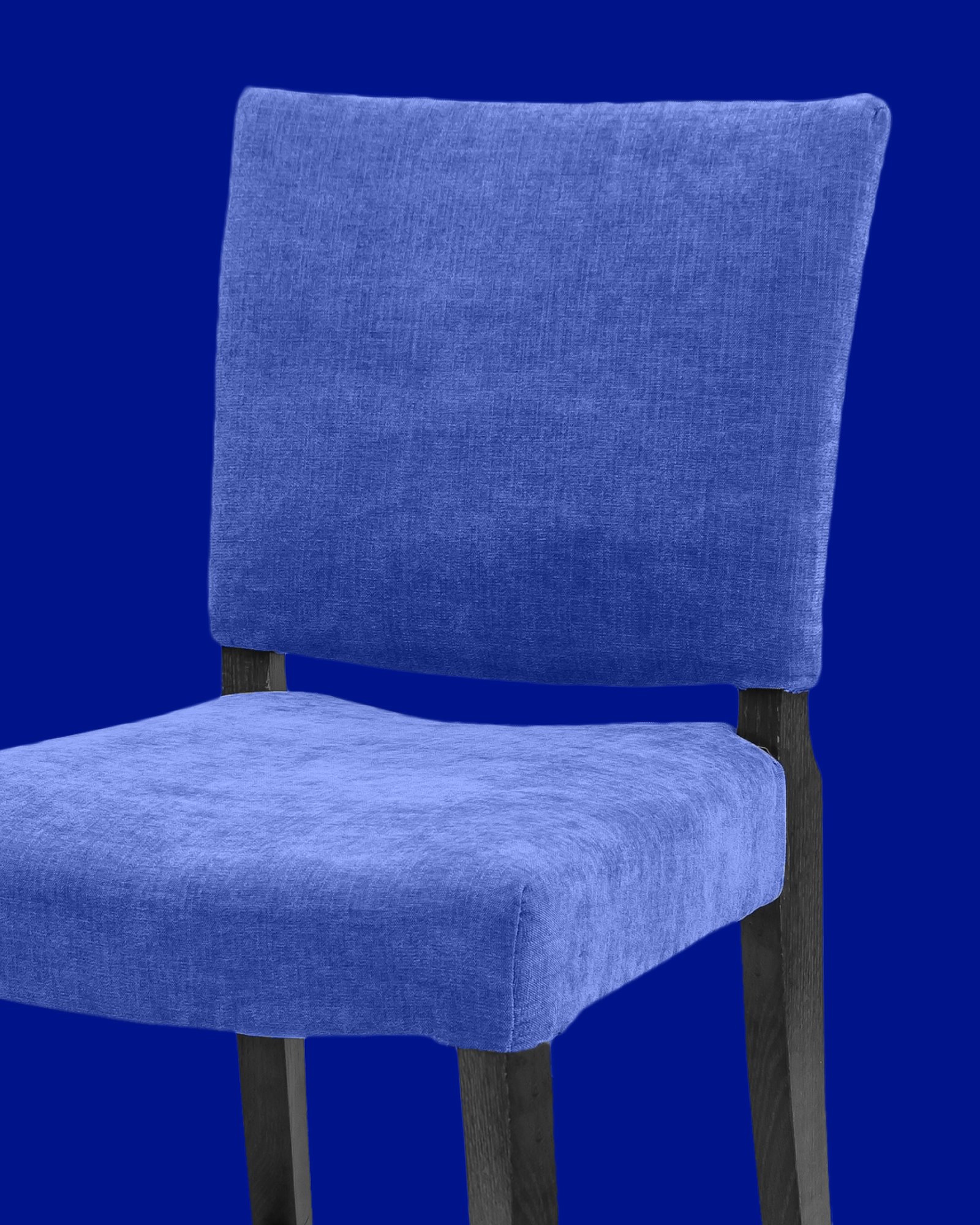
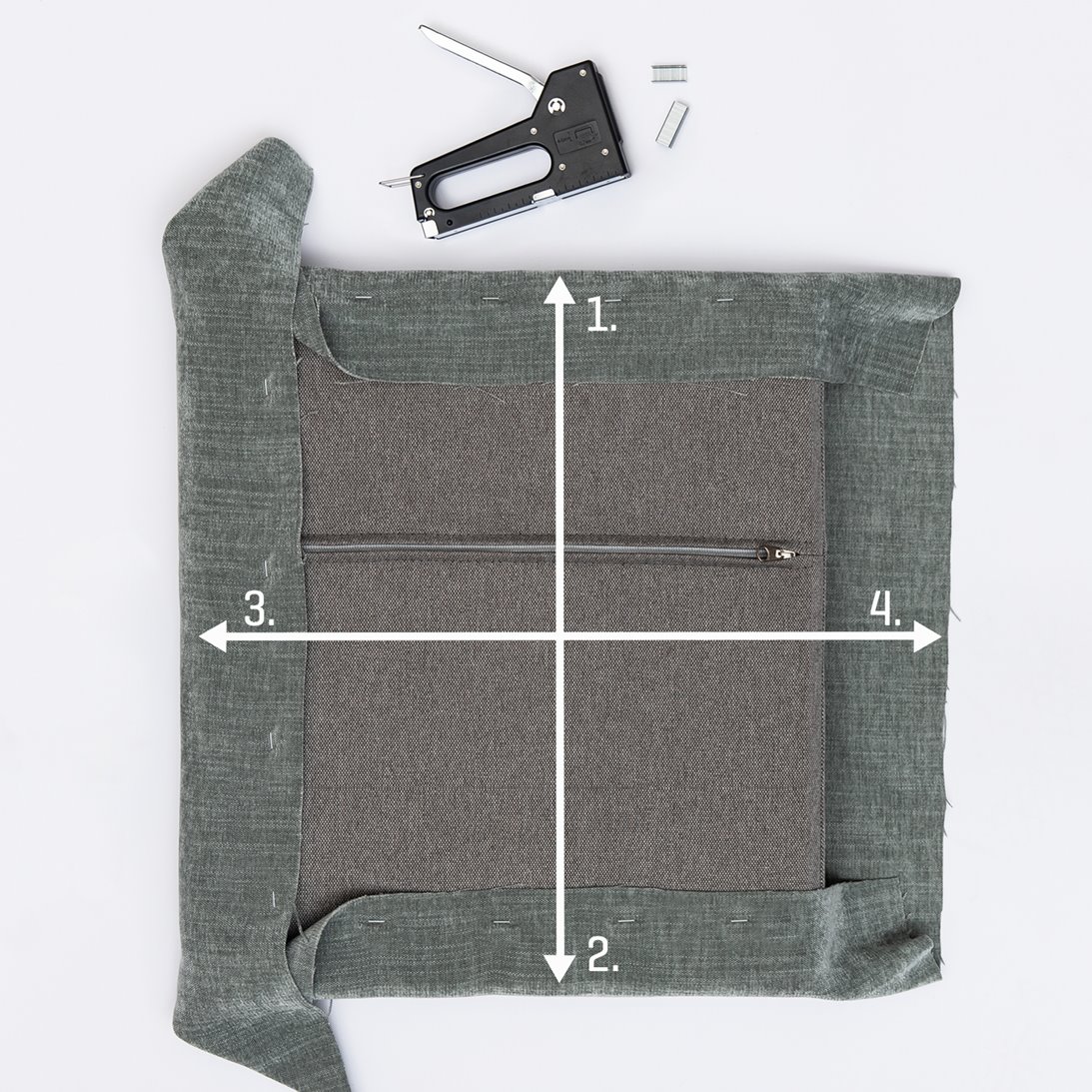
1.Technique for covering a flat surface: To upholster a flat surface, cut fabric with approx. 5 cm seam allowance. Use a stapler or tack the fabric into place. Start by anchoring the fabric at the centre of one side. Then anchor the opposite side. Anchor the fabric crosswise, as shown above, until about 10 cm from each corner, the fabric should be taut. 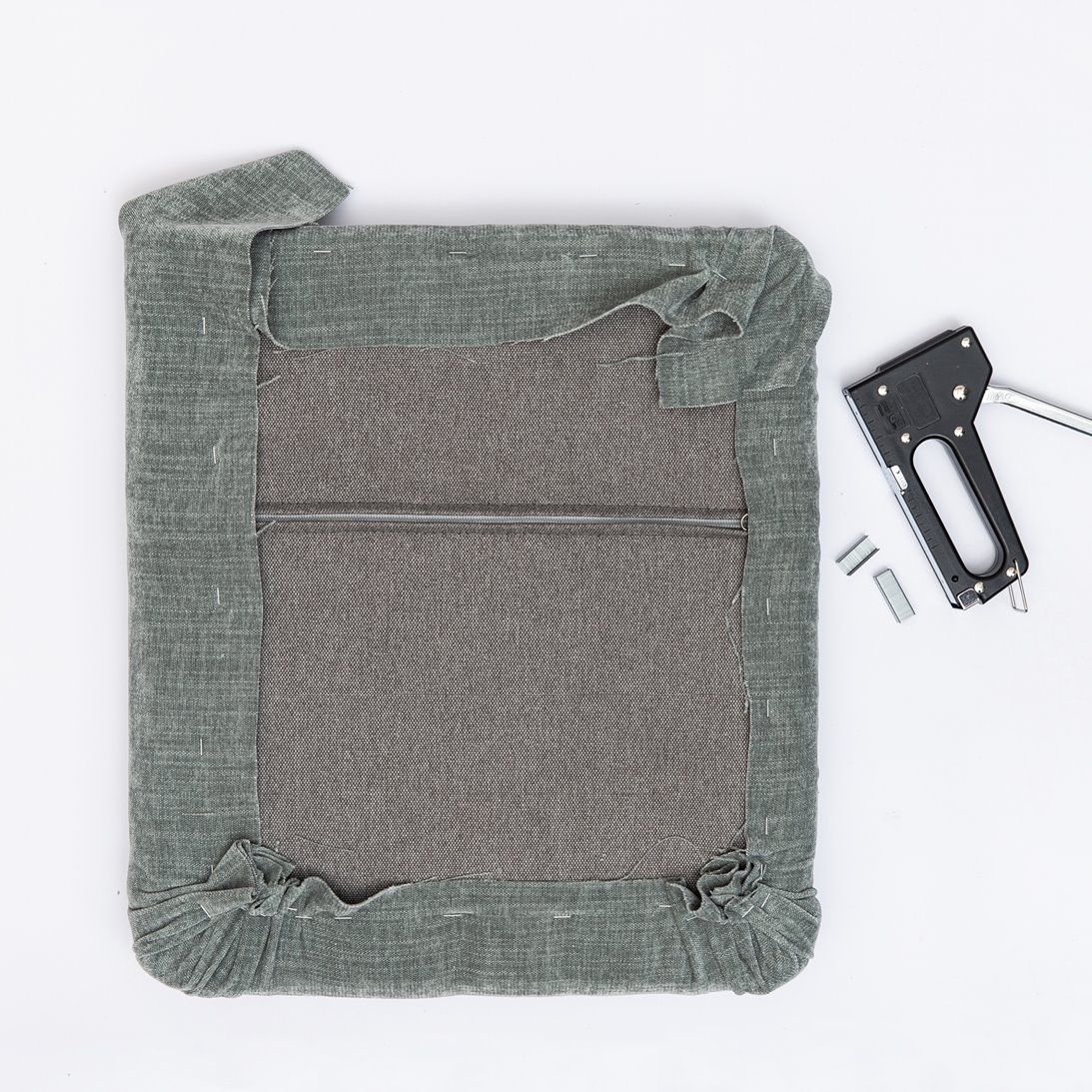
2.Technique for covering a corner: At the corners, pull the fabric towards the back and fold tightly around the corner. Then staple or tack into place. Trim off excess fabric around the edge to give a good finish. To upholster a surface with a deep seat/edge, fold a 90° angle (see step 13) around the corner to give a good finish. To upholster a surface with a deep seat/edge, fold at a 90° angle (see step 13). 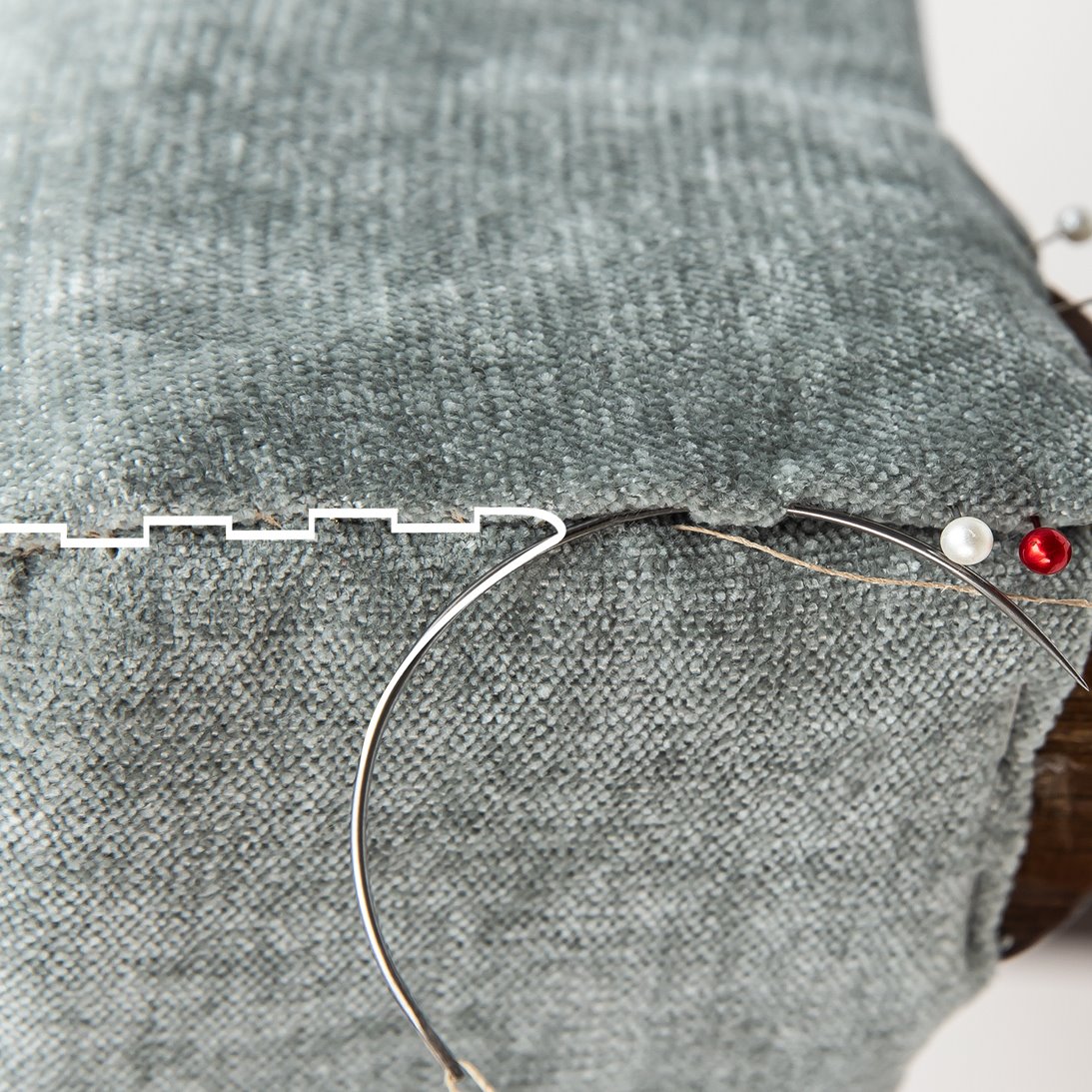
3.Blind stitching technique: Here is an illustration of the blind stitching. After each stitch, drag the thread across the sewing to tighten the stitching. The stitches then become invisible. When you drag the thread across, you can also see where to make the next stitch. Weave the thread in firmly to finish. 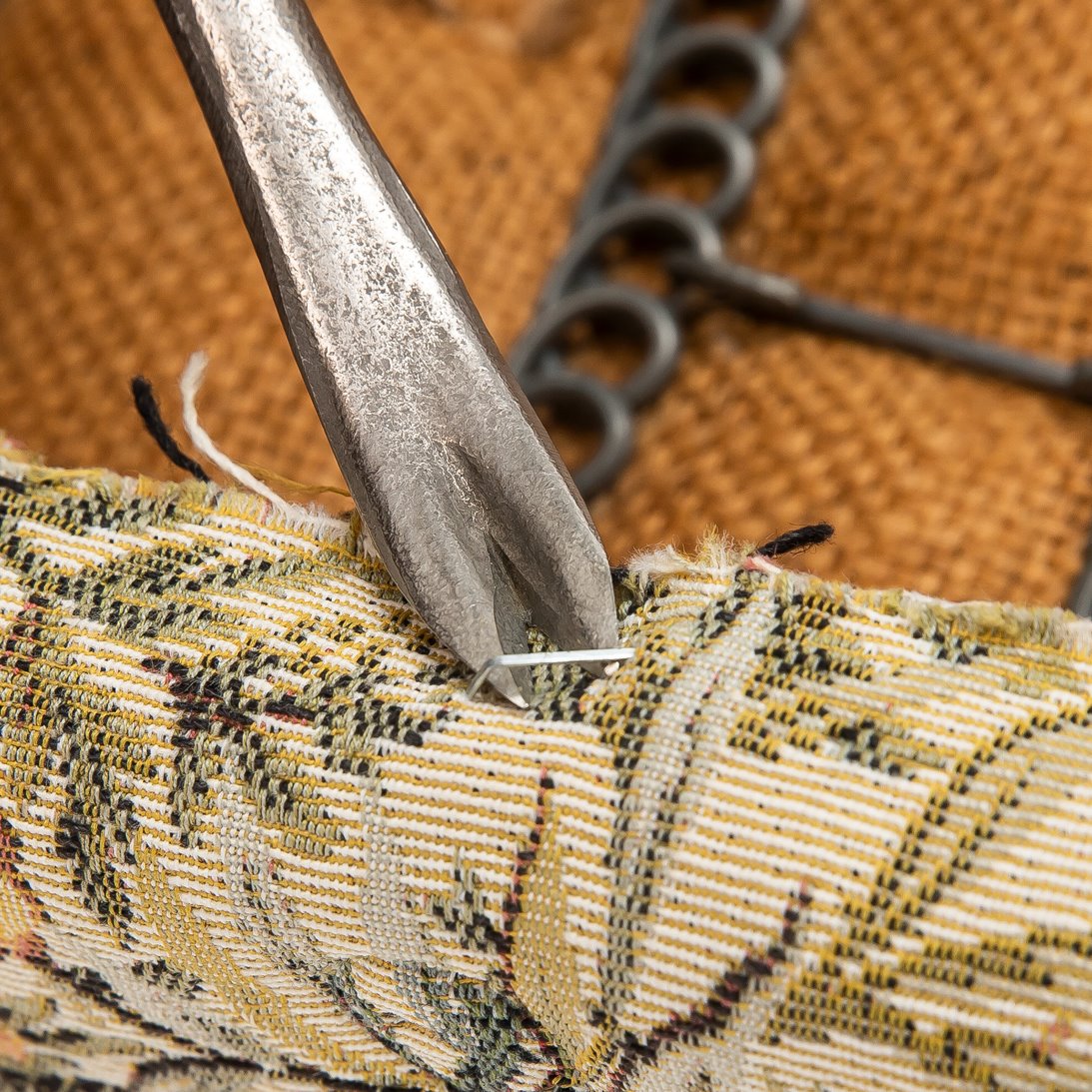
4.Remove all the staples. To remove any old stitching, use a seam ripper. 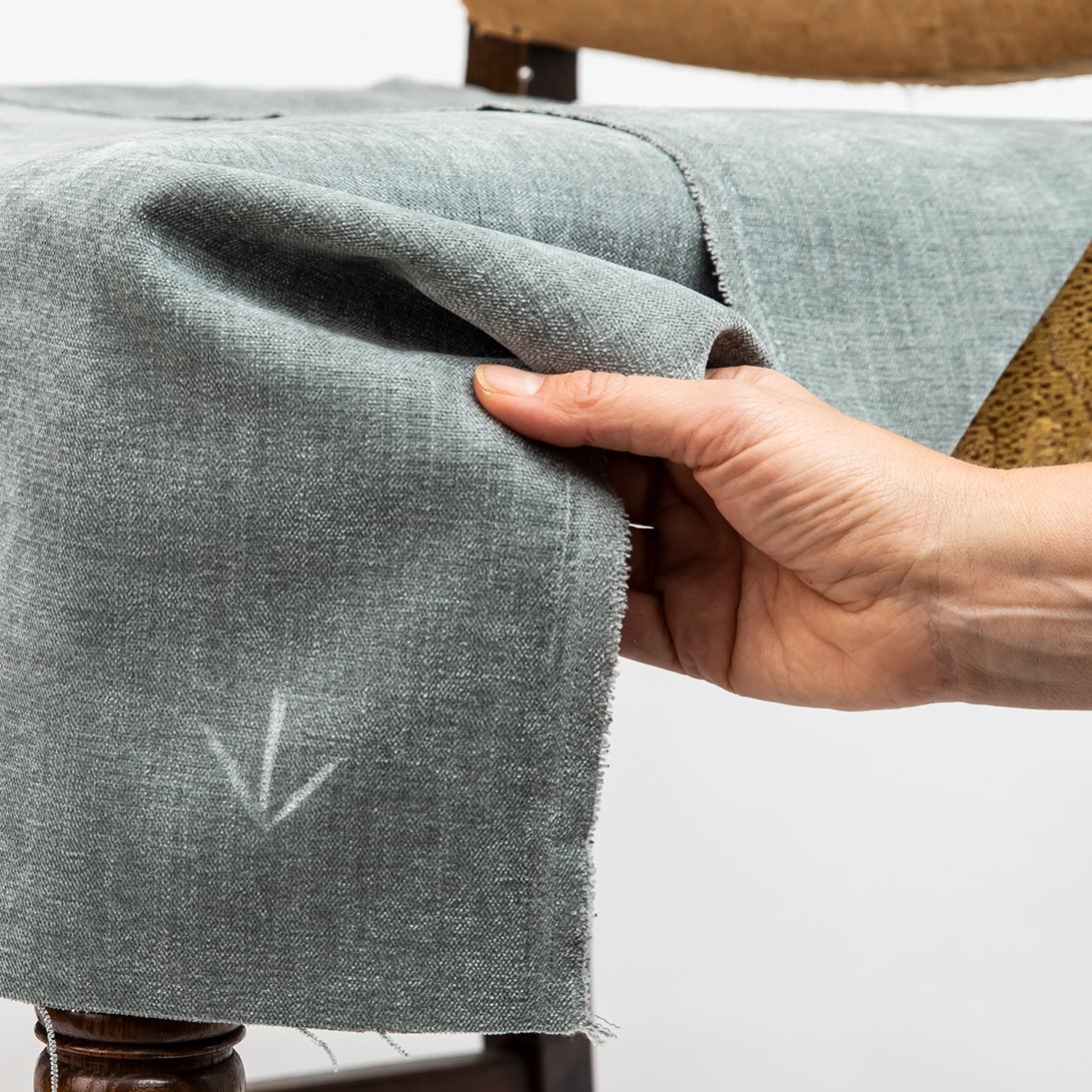
5.If using pile fabric (e.g. velvet, chenille), draw an arrow on the right side to indicate the direction of the nap. The nap should face the front edge of the seat to avoid seating marks. 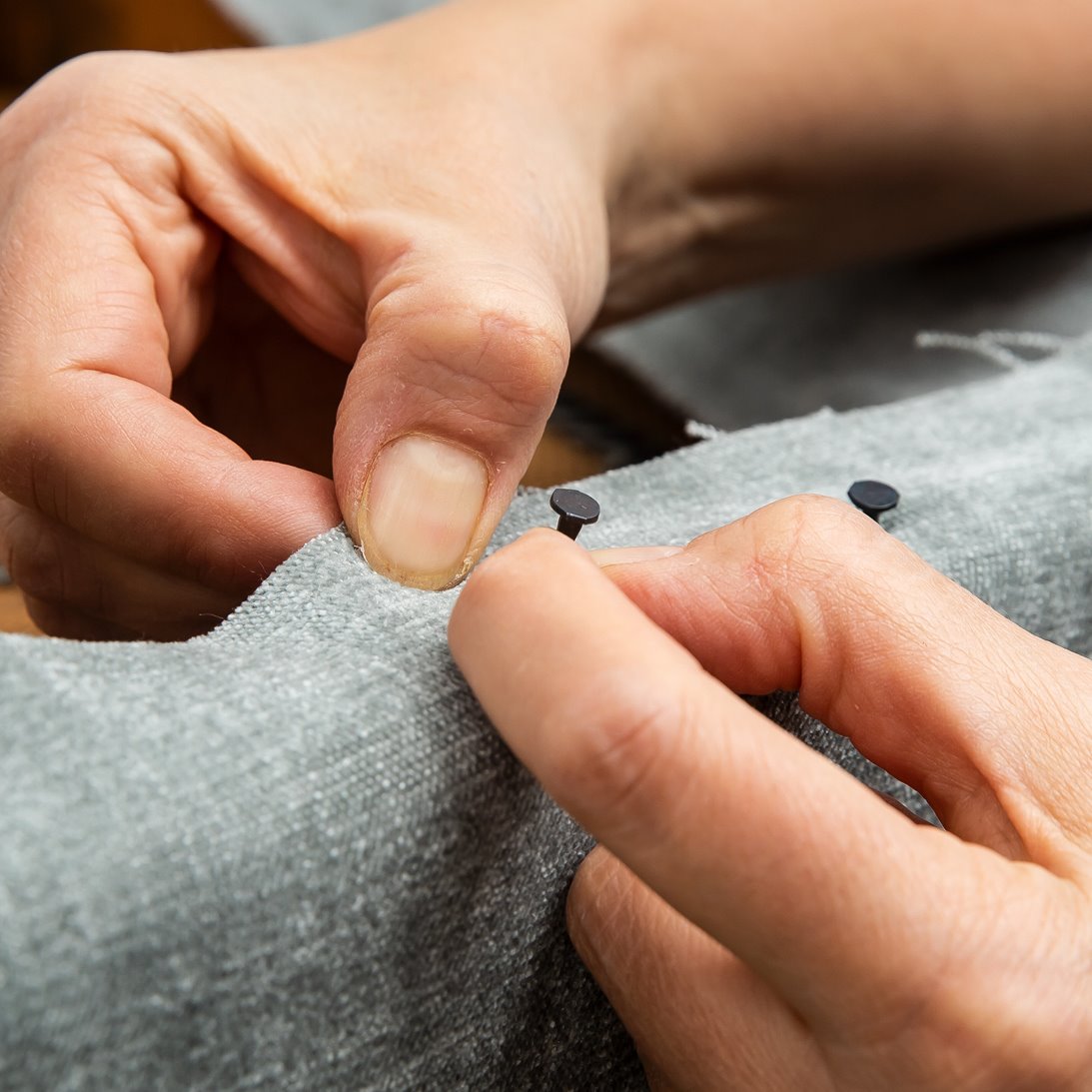
6.Use stables or upholstery tacks underneath the seat, as shown on the first page of general techniques. Start on one side, pull the fabric taut and then staple/tack on the other side. Repeat on the remaining sides. 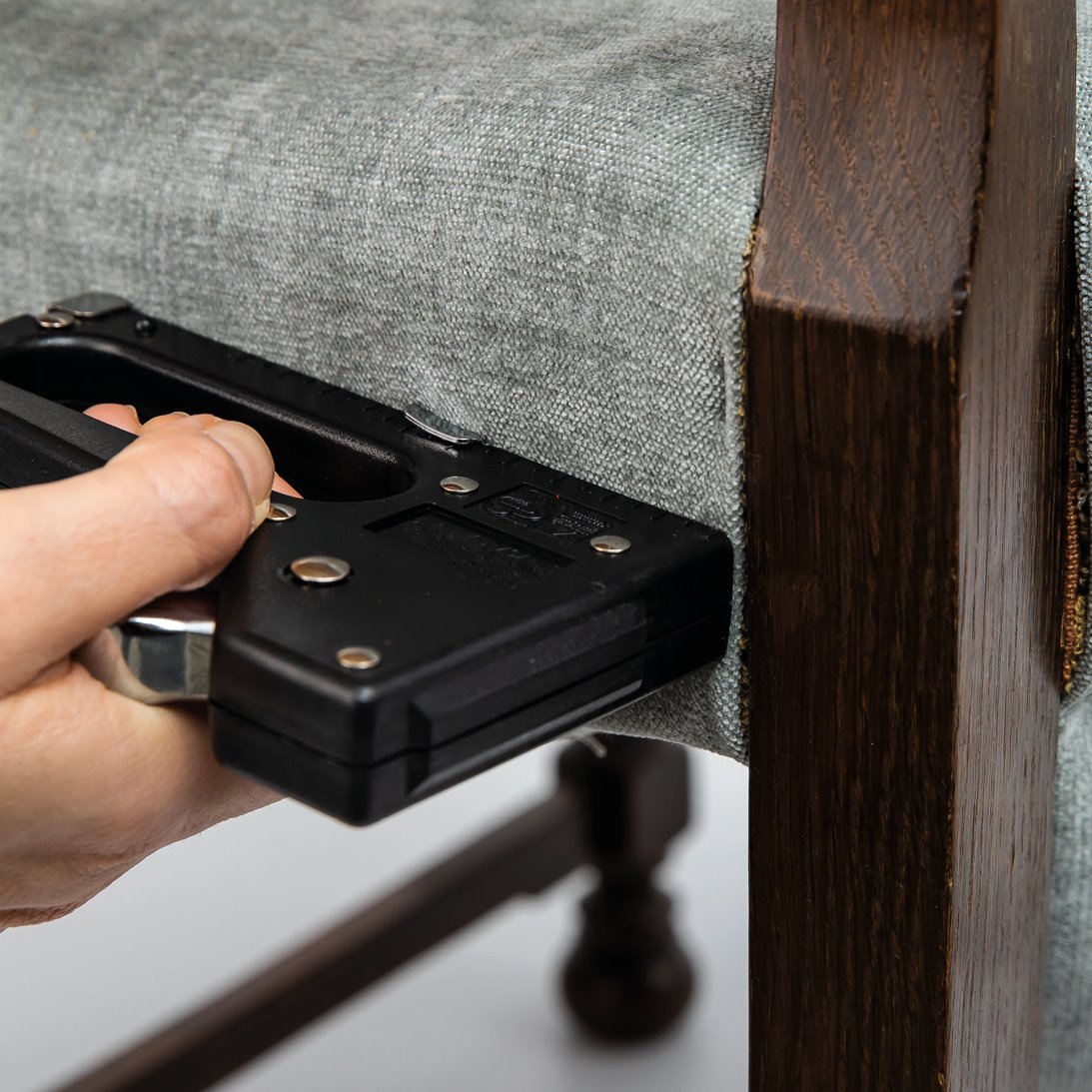
7.If necessary, staple at the rear corners 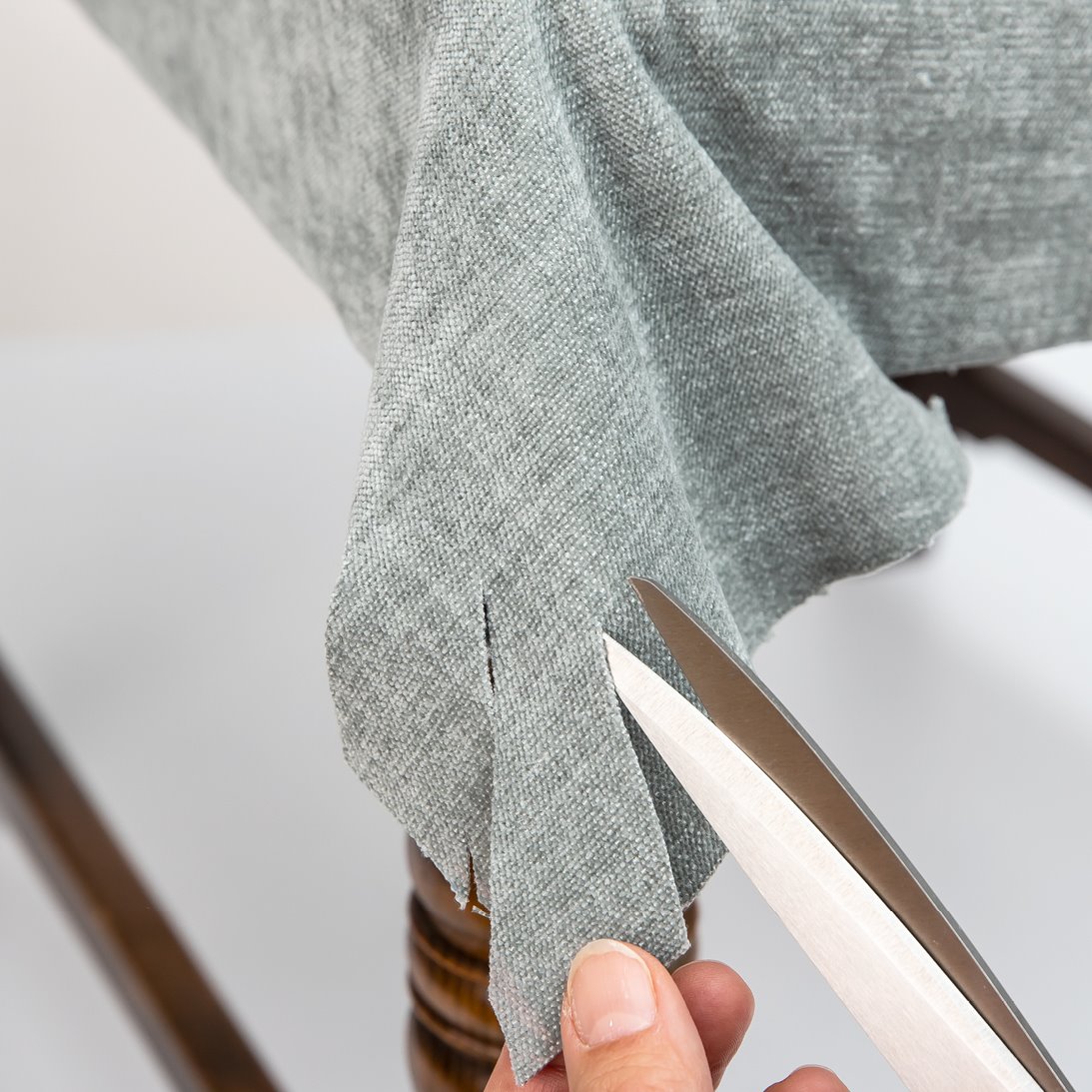
8.Snip the fabric at the corners. Carefully snip away a triangle of excess fabric. 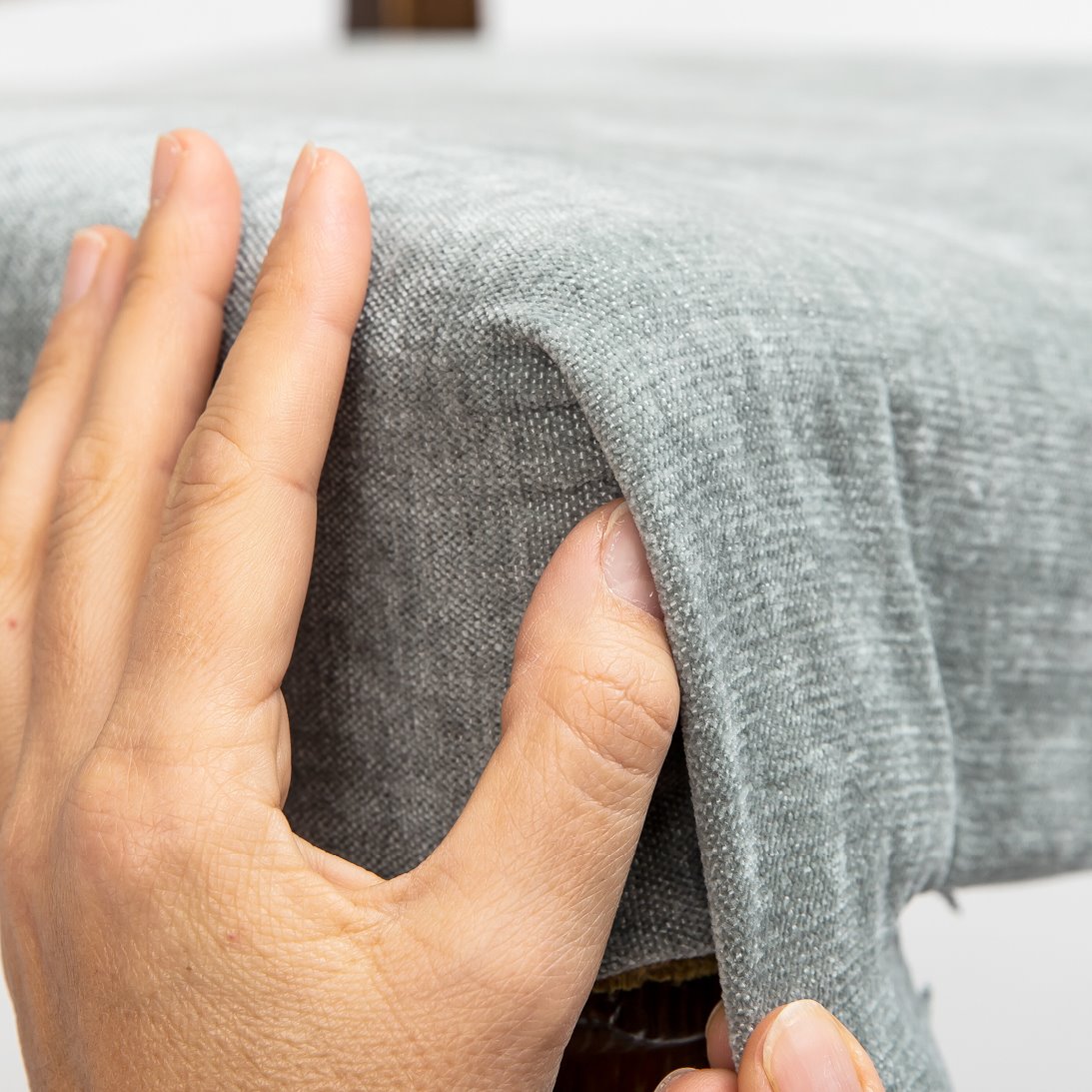
9.Fold and pull the fabric tight. A 90° fold is shown here. 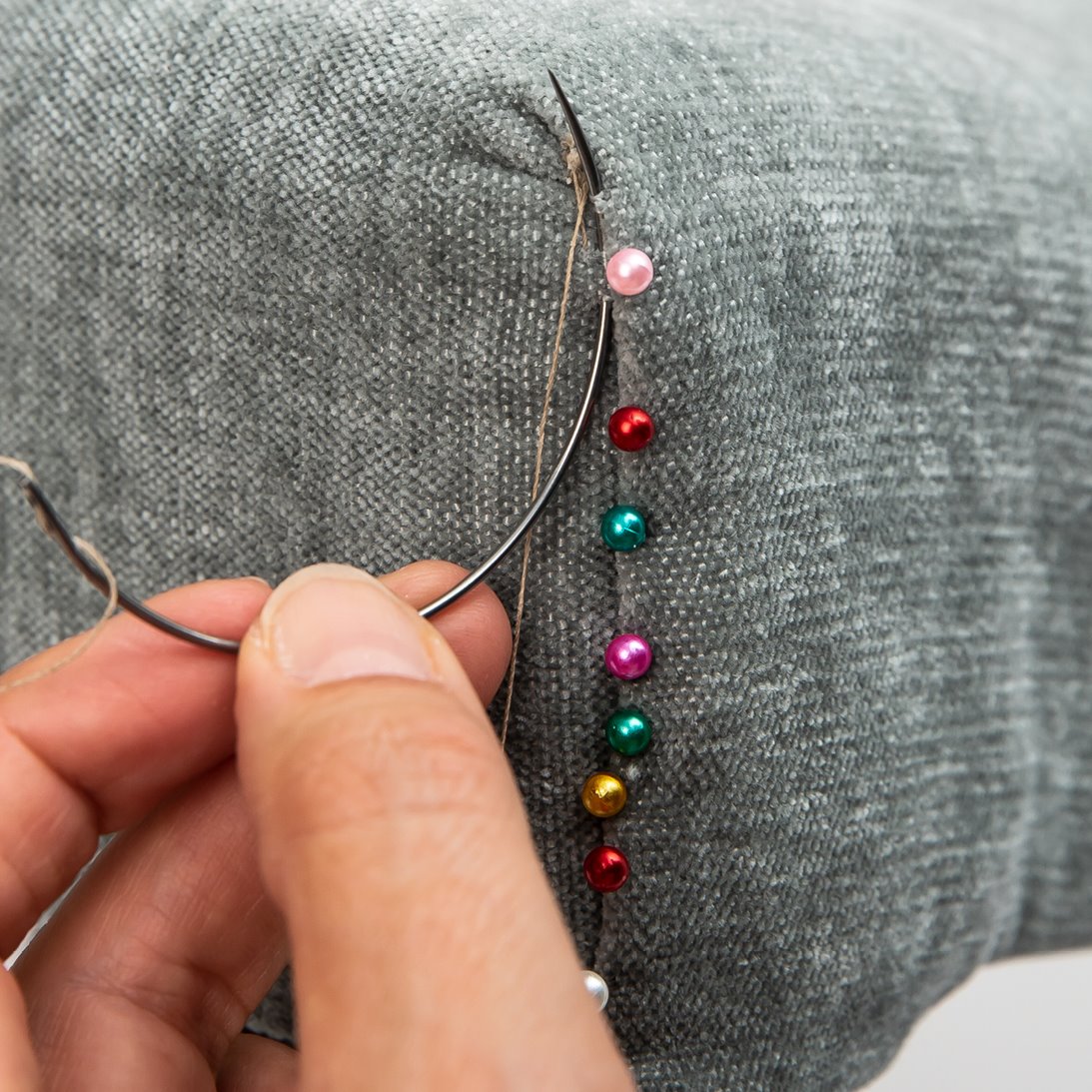
10.Thread a curved needle with strong furniture thread. Tie a knot at one end. Use blind stitching. This technique is shown on the first page with general tips. 
11.Blind stitching using a curved needle.
